BadWolfBrewing
Well-Known Member
yeah, I should probably be careful...

that should work... although I strongly advise a GFCI.Ok, so I have a couple of questions about this. I just got this kit. The only wire I could fine in my garage was 10/4. I'll have to check my 30A outlet in their, it "may" be 10/3 but I"ll double check.
If I were to use the 10/4, basically I would run 1 hot into the SSR #1 input(from the outlet), and the hot from the SSR #2 input going to the heating element. The other hot, would just go straight through, from the outlet, into the other input on the heating element. The ground would go from the outlet, into the ground on the SSR, then the other ground from the SSR would go to the ground screw on my keggle element container. Then I should just cap of the neutral on the outlet side, run it straight through the box, and then cap it on the keggle side? Does that all sound right?
Question #2, if I wanted to also wire in a voltage/amp reader. Would 1 wire go to the hot in, and the other wire to the hot out, is it that simple?
that should work... although I strongly advise a GFCI.
10/3 has 4 wires btw they dont count the ground as a wire for some reason...
I will see if I can check my welding wire outlet and see if that is HHG and not HHNG. My understanding between 10/3 and 10/4, they both have ground wires, but the 10/4 one, the ground has a covering on it like the other wires.
Anyone have a link for reasonable GFCI options, most of the breakers I see are double or triple the price I just paid for this controller kit :-(










There are inline 20A gfci units that are much cheaper than $50 which will work if you go with a 4500w element instead of the 5500w ... I use the 4500w elements and they are plenty for 5 or 10 gallon batches..
I totally agree the extra cost stinks but in the long run even $50 is nothing compared to the piece of mind and the life it could save...
No there is no surge since it pure resistive load. However I'd reccomend to set potentiometer to "min" position every time when you switching your controller on or off.
To measure voltage on element you need to connect it in parallel to element (black wire to to one SSVRvoutput red wire to second hot which going straight to element. And you need to put any hot leg through that black transformer (ring). But be aware - power supply inside that meter doesn't like chopped sin wave produced by SSVR so you have a good chance to burn it out.
So I'd reccomend to connect black wire to SSVR in. This way voltmeter will show not the voltange on an element but your mains voltage (ie 240v). But you will see changing amps going through an element.
No, one wire from meter (doesn't matter black or red) to SSVR out and another wire from meter to your second hot leg which is not connected to SSVROk, you are saying black wire on the power in, on the SSR, and the red wire on the power out in the SSR going to the element. I know I need to hook the ring in to, that has inputs on the back of the meter for it. If this does burn out for some reason, it was less than $10 anyhow.
No, one wire from meter (doesn't matter black or red) to SSVR out and another wire from meter to your second hot leg which is not connected to SSVR
I have not exactly the same but similar GFCI breaker. Works fine. You can install it in the controller box and use as a switch.I currently use Cutler Hammer breakers in my box in my garage, how would I know if that link you gave me for that breaker would work in my box?
.
I have not exactly the same but similar GFCI breaker. Works fine. You can install it in the controller box and use as a switch.
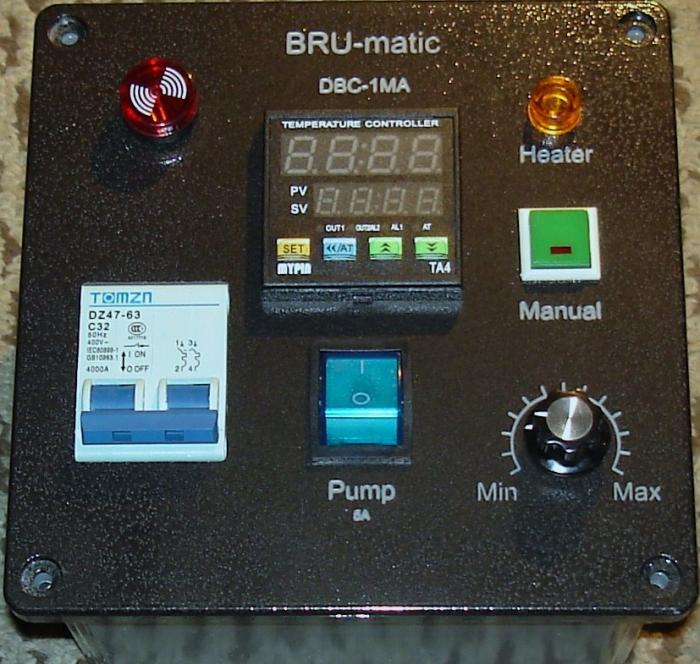
This GFCI breaker has HH in/out, It monitors the balance between that two hots. If disbalance happened due to a leak it trips.
And yes you can use 6x6x4 (~$12) or 8x8x4 (~$21) plastic boxes from homedepot or lowes.
I don't have a picture of controler with GFCI breaker, but has a picture of controller mounted in 6x6x4 plastic box (similar to HighGravity SV)
 Put the SSR on a small stand on the bottom, drill some holes for helping with heat. And then mounting the voltage/Amp meter on the back, along with the switch. Also, thank you for answering all of your questions.
Put the SSR on a small stand on the bottom, drill some holes for helping with heat. And then mounting the voltage/Amp meter on the back, along with the switch. Also, thank you for answering all of your questions. 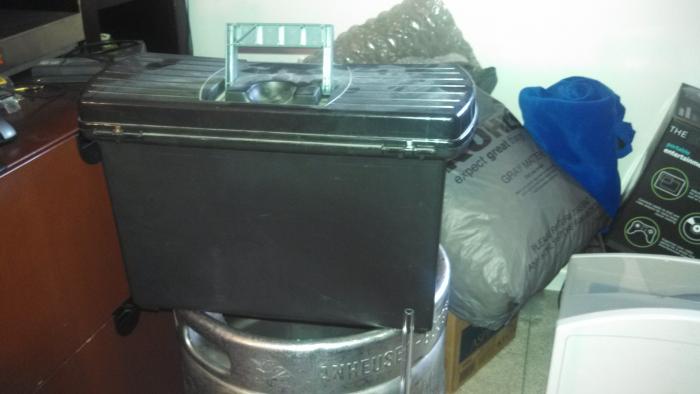
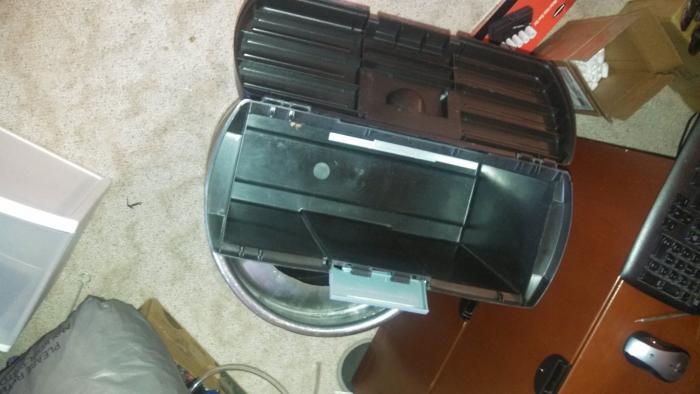
Yes I did ground an SSR.Did you run the grounds on the in and out, to the SSR grounds then? So do you think using my current 30A setup would be fine then?
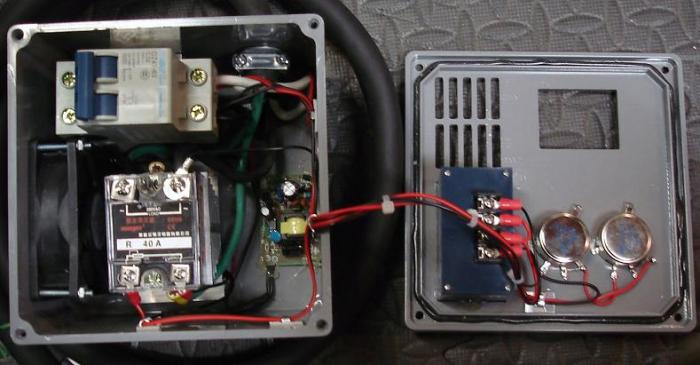
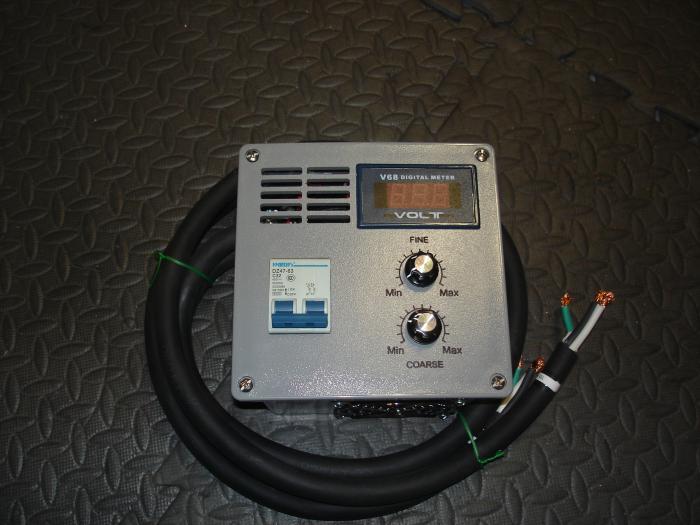
I have one more question, is any size wire fine for the potentiometer? I cut up an older extension cord we weren't using anymore and pull the wire from that, that I used in my stir plate. I still have a lot of that left over, wondering if I can use that for the POT?
Also, is it necessary to solder to the potentiometer, or can you just use some wire clips and connect to it that way?
Any size wire would do. And no you don't need to solder. The connectors don't work too well though, the smaller ones work ok. I just sent the wire through the hole, twisted it and then heat shrink tubing to seal it.
I have one more question, is any size wire fine for the potentiometer? I cut up an older extension cord we weren't using anymore and pull the wire from that, that I used in my stir plate. I still have a lot of that left over, wondering if I can use that for the POT?
Also, is it necessary to solder to the potentiometer, or can you just use some wire clips and connect to it that way?